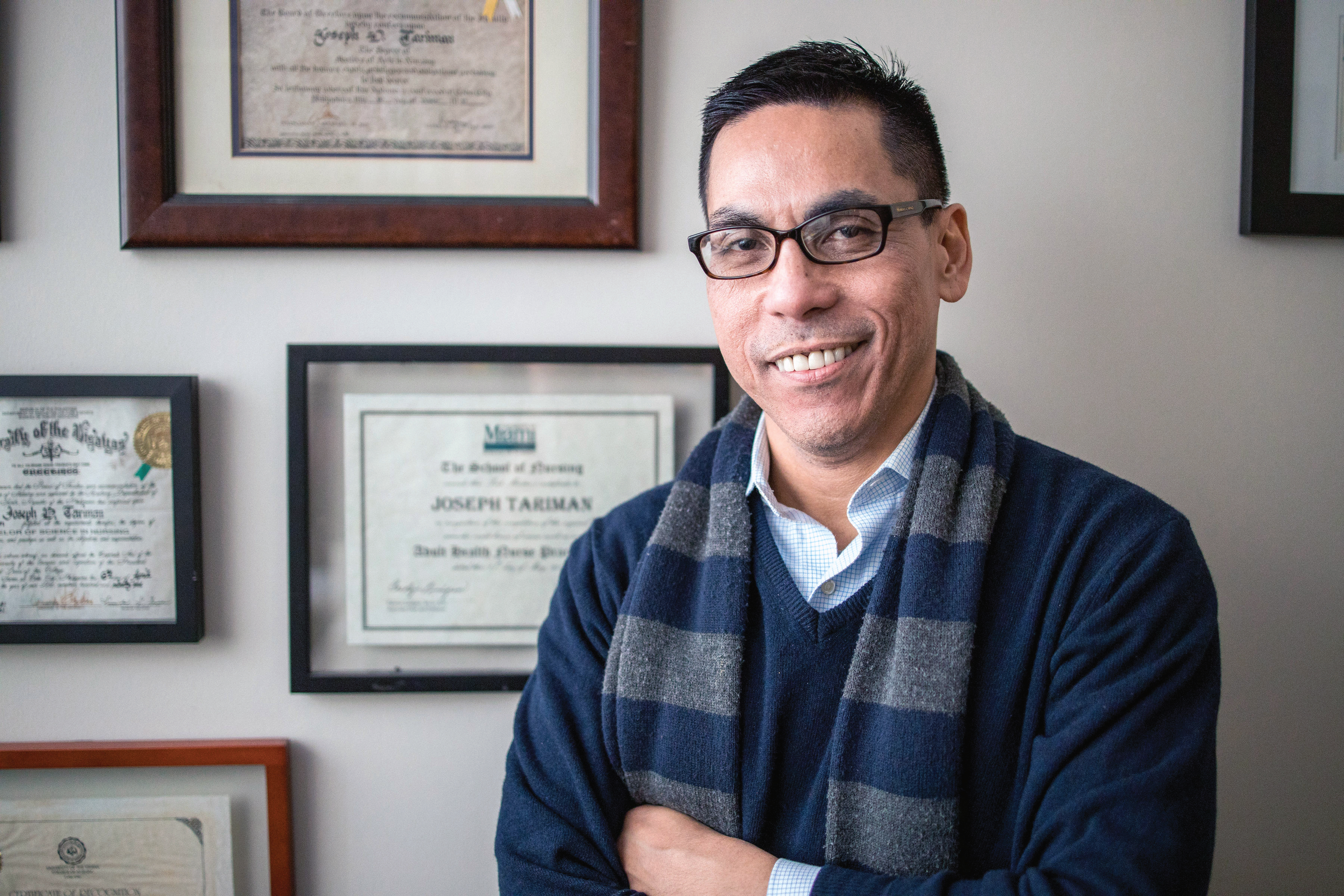“Two heads are better than one” is an idiom so old and often used that it borders on cliché.
But as with most colloquial sayings, a kernel of truth is buried underneath. Combining forces to solve problems, overcome obstacles, and coordinate efforts is the key to nearly every successful endeavor, and it’s especially true for patients and providers navigating the cancer journey.
Now more than ever before, patients are taking an active role in their cancer care. They’re engaging with nurses, physicians, and the entire support staff to better understand their diagnoses to make the most-informed treatment choices possible. Shared decision making (SDM) has become a common practice delivery model in oncology, and nurses play an invaluable role for their patients by providing education, symptom and side effect management, psychosocial support, patient advocacy, and more.

Understanding the Goal
Research has found that clinicians were underestimating their patients’ level of interest and need to be involved in their care decisions. In response, many cancer institutions are moving away from a paternalistic model of care—otherwise thought of as “doctor knows best”—to incorporate more patient-based decision making.
ONS member Joseph Tariman, PhD, RN, ANP-BC, FAAN, assistant professor and associate codirector for the doctor of nursing practice program at DePaul University in Chicago, IL, says that oncology nurses need to understand the role they play in SDM with their patients.
“SDM is a collaborative process between two parties—the clinician and the patient,” Tariman says. “It involves sharing information and building consensus, and it culminates with a mutually agreed-upon treatment approach. Oncology nurses are well positioned to empower patients to communicate their needs, values, and preferences to their clinicians when many treatment options are available.”

ONS member Crystal Chu, BSN, RN, a PhD student at the University of Virginia and oncology nurse at Sentara Martha Jefferson Hospital in Charlottesville, VA, recognizes how oncology nurses work with patients to understand their preferences for treatment.
“Nurses are critical liaisons between patients and oncology providers when it comes to treatment decisions,” Chu says. “They are in the unique position to understand patients’ preferences, truths, and goals that may not be openly shared with the provider. With that information, nurses can bridge the gap in communication and, ultimately, help patients decide what is best for them.”
In a 2016 literature review, “we examined the contemporary roles of oncology nurses throughout the entire SDM process using a qualitative approach,” Tariman says. “We found that patient education, giving information to the multidisciplinary team, psychological support, side-effect management, and patient advocacy are at the top of the list of nursing roles during SDM.”
Advocating for Patient Involvement
To drive SDM in practice, oncology nurses can engage everyone involved in the treatment process. Whether it’s with the medical team, patients, caregivers, or institutional administrators, oncology nurses can be a key voice for their patients.
“Oncology nurses must urge their leadership to provide organizational support and establish a system-wide culture of a SDM care delivery model,” Tariman says. “It’s essential to achieve better cancer treatment decision outcomes such as higher patient satisfaction with treatment decisions, fewer decisional regrets, and improved mental health outcomes—like less stress and anxiety associated with cancer treatment decision-making.”
Chu recognizes that the relationships forged between nurses and their patients often carry a level of trust not shared with other healthcare providers. Nurse can use their unique relationship-building skills to hear what patients really want to communicate.
“Oncology nurses are in the trusted position to hear the stories patients don’t share with other providers,” Chu says. “I think nurses have been facilitating that communication for years and still continue to be that voice for the patient. Nurses can emphasize that patients should be involved in the decision process, especially as an equal contributor. Encouragement from an oncology nurse that patients are experts about their own values, histories, and preferences opens the door for deeper communication.”
Tariman adds that nurses can connect patients with valuable resources to aid in the decision-making process.
“Oncology nurses must also assist patients in obtaining quality information to make informed treatment decisions,” Tariman says. “The use of high-quality patient decision aids (PDAs) that integrate patient preferences and values into the treatment decision-making process—like the Personal Patient Profile–Prostate or the PDAs included in the Ottawa Hospital Research Institute’s A–Z Inventory of Decision Aids—must be highly encouraged and integrated into clinical practice.”
Evolving Nursing Roles
Chu says that patients’ goals may fluctuate throughout the decision-making process and the larger cancer journey, and it’s the oncology nurse’s responsibility to reassess their status frequently.
“A key component to SDM is acknowledging patient preference and values,” Chu stresses. “It’s important to assess patients’ goals for their cancer treatment and for nurses to understand that goals may change over the course of the cancer continuum.”
Tariman et al.’s research found that flexibility was key in the evolution of SDM for oncology nurses.
“Adaptability skills are one of the nursing role competencies essential for SDM,” Tariman says. “Those skills include the oncology nurse’s ability to adjust decision-making roles contingent on multiple variables in the face of uncertainty, regular assessment of patient preferences and values throughout the cancer treatment continuum, continuous assessment of the patient’s expectations of participating in the SDM process, and the ability to evaluate treatment decision outcomes.”
Overcoming Obstacles
For many institutions, SDM is still in the implementation phase. In fact, most practitioners don’t have any formal training or best practices to incorporate SDM into their care plans.
“Education and training of oncology clinicians and patients on SDM and the reliable instruments to measure their knowledge and skills on SDM appear to be lacking,” Tariman says. “The simultaneous use of high-quality PDAs with an implementation of system-wide SDM care delivery models and the impact on treatment decision outcomes require further scientific inquiry.”
Overcoming Obstacles
For many institutions, SDM is still in the implementation phase. In fact, most practitioners don’t have any formal training or best practices to incorporate SDM into their care plans.
“Education and training of oncology clinicians and patients on SDM and the reliable instruments to measure their knowledge and skills on SDM appear to be lacking,” Tariman says. “The simultaneous use of high-quality PDAs with an implementation of system-wide SDM care delivery models and the impact on treatment decision outcomes require further scientific inquiry.”
Chu adds that aspects of SDM research need to include follow-up and understanding of patient regrets about a treatment decision.
“Part of my PhD research focuses on patient decisional conflict and regret. I think most SDM literature highlights increasing patient satisfaction. Although satisfaction is important, acknowledging that patients do experience cancer treatment regret is powerful,” Chu stresses. “Regret is a deeper emotion compared to satisfaction, and it needs more attention. Our goals as clinicians and providers should be to reduce decisional conflict and regret since most treatments have lifelong consequences that, in turn, could ultimately lead to lifelong regret.”
Advancing Patient-Centered Care
For Tariman, oncology nurses have a tremendous stake in the decisions their patients make, and future studies and resources should look to understand that role in SDM.
“Oncology nurse role identification and delineation during the SDM process are essential to establish a fierce nursing voice in a multidisciplinary oncology care team,” Tariman says. “Nursing leadership should allocate resources for education and training of oncology nurses and all personnel who provide direct patient care on SDM to achieve its short- and long-term benefits.”
Chu encourages nurses to check their biases at the door and enter the SDM process with an open mind and a goal of helping patients make the best decision for them.
“Everyone has unconscious biases that influence our approach to situations, and it’s important for clinicians to be aware of what those biases could be,” Chu says. “Self-reflection can reduce the chance of your unconscious biases influencing patients to choose one way or the other. Ultimately, the decision-making process is about the individual patient and should be approached with an openness to create a treatment plan that reflects that individualism along with best clinical practice.”






